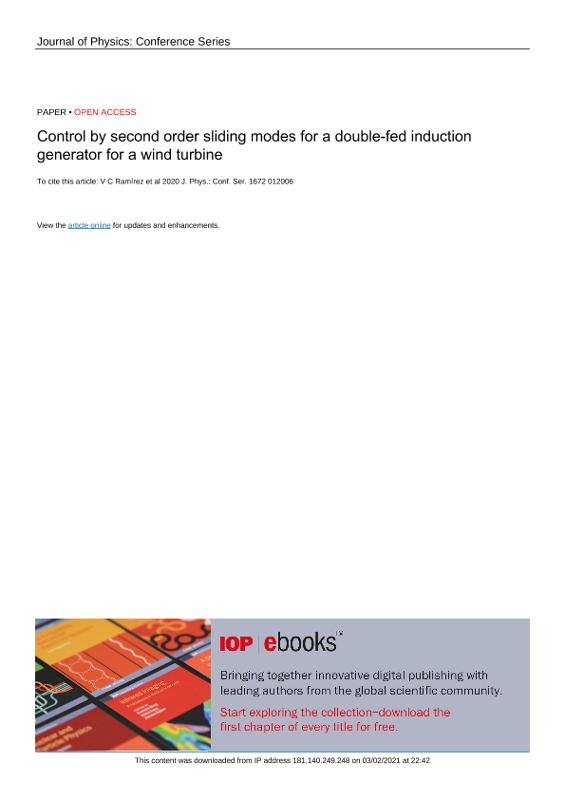Abstract
In recent years, the consumption of electrical energy in the world has increased, increasing the construction of power plants that operate with fossil fuels, which emit a large amount of CO2. Due to this polluting process, it is important to generate efficient alternatives. In this work the model of the double-feed induction generator for a wind turbine is exposed, to which the control by second order sliding modes will be applied to its state variables and these results will be compared with the classic proportional-integral-derivative technique of control. In this work it was found that the responses of the system with a second order sliding mode control compared to a control of the proportional-integral-derivative type, have a shorter establishment time and a slower behavior over time; in some cases the waveforms of the signals have a vibration effect at the moment of the response, but despite this, the response is not affected due to the wind speed to which the turbine is subjected, and reduces quickly system error at any instant of time. Whereas with a proportional-integral-derivative controller, some state variables can be highly dependent on wind speed.














